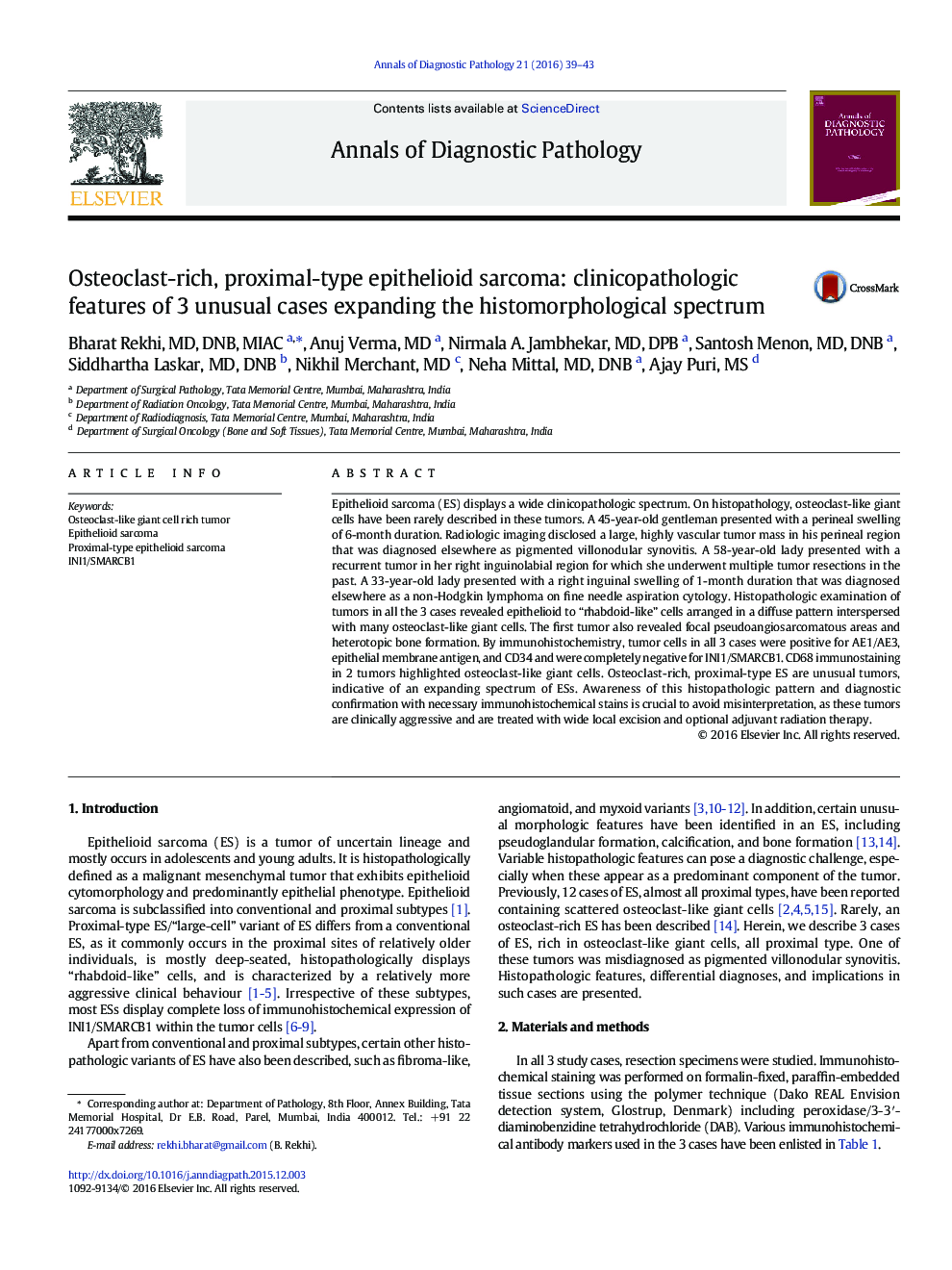| Article ID | Journal | Published Year | Pages | File Type |
|---|---|---|---|---|
| 4129703 | Annals of Diagnostic Pathology | 2016 | 5 Pages |
Epithelioid sarcoma (ES) displays a wide clinicopathologic spectrum. On histopathology, osteoclast-like giant cells have been rarely described in these tumors. A 45-year-old gentleman presented with a perineal swelling of 6-month duration. Radiologic imaging disclosed a large, highly vascular tumor mass in his perineal region that was diagnosed elsewhere as pigmented villonodular synovitis. A 58-year-old lady presented with a recurrent tumor in her right inguinolabial region for which she underwent multiple tumor resections in the past. A 33-year-old lady presented with a right inguinal swelling of 1-month duration that was diagnosed elsewhere as a non-Hodgkin lymphoma on fine needle aspiration cytology. Histopathologic examination of tumors in all the 3 cases revealed epithelioid to “rhabdoid-like” cells arranged in a diffuse pattern interspersed with many osteoclast-like giant cells. The first tumor also revealed focal pseudoangiosarcomatous areas and heterotopic bone formation. By immunohistochemistry, tumor cells in all 3 cases were positive for AE1/AE3, epithelial membrane antigen, and CD34 and were completely negative for INI1/SMARCB1. CD68 immunostaining in 2 tumors highlighted osteoclast-like giant cells. Osteoclast-rich, proximal-type ES are unusual tumors, indicative of an expanding spectrum of ESs. Awareness of this histopathologic pattern and diagnostic confirmation with necessary immunohistochemical stains is crucial to avoid misinterpretation, as these tumors are clinically aggressive and are treated with wide local excision and optional adjuvant radiation therapy.
